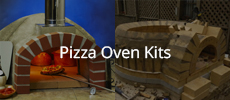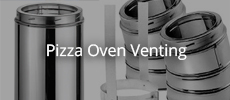Hi FB folks,
Long time lurker, first time poster. I've been interested in building an oven of my own for a few years and I'm ready to take a crack at it. I acknowledge I have zero experience with the materials and techniques, but I do love to make things, and I love to cook. I've sunk about 50-100 hours into these forums - you collectively have inspired me to take the plunge and build one of these things... Thank you to everyone for letting me learn from you, and thank you in advance for any constructive feedback on the below.
I am posting my plans here in the event you feel like sharing any feedback - I hope to avoid any egregious mistakes this way, so feel free so I can consider and address.
I credit WaterDog's build in 2024 as my main source of inspiration - I'll mostly be following this blueprint as it turned out fabulously and it all checks out with all the rest of the seasoned members of the community here.
Goal & purpose:
Cooking pizza for 1-10 people, with flexibility to cook steak on a Tuscan grill, slide in a chicken or loaf of bread, etc.
I need an oven on the small side so it's manageable in the limited space I have to work with, offers quicker fire times, and keeping in mind I am a novice, so approachability is a factor. I started out thinking I'd use fire bricks but pivoted to casting after considering feedback from members on time + experience, especially considering this needs to be a tighter build.
Considerations:
- I live about a half mile from the beach in southern California. Humidity is natural, if not constant, here.
- It needs to be portable. It'll rest on gravel in an uncovered, outdoor garden area. When in use, I'll pull it out a few feet to give some buffer between the oven + flue and the plants/trees. I do not anticipate being able to easily move this, but I need to be able to move it. When not in use, I'll cover with a weatherproof cover not unlike those on BBQs.
Design basics worth mentioning:
Dome: I am purchasing the below plastic semi-sphere to use as my dome mold. Designed as a planter, if has an external diameter of 21" and height of 7.5". I will cast on top of this by hand (covering mold in saran wrap for easy removal). The flat base of the planter, which would form the dome, will be topped off with sand or other moldable material to give the top of the internal dome a uniform dome shape, and bring the ultimate interior dome height to 8".
I'll follow in WaterDog's footsteps by utilizing a rod through the roof of the mold with a template to ensure uniform wall thickness.


Flue gallery: I will create a mold out of wood to cast the gallery separately.
Floor: Fire brick in a herringbone pattern. I will cut the perimeter bricks with an angle grinder, knowing these do not need to be perfectly executed and will be enveloped by ceramic blanket + external layers.
Some open questions I am considering, which I'd welcome your thoughts on:

1) Does it matter what material I use for the supporting slab? The slab will sit on the steel frame.
2) Can I get away with 3" of 5:1 vermicrete instead of 4 to cut weight?
3) I am projecting total wall thickness of 3.5 inches: 2 inch inner dome, 1 inch ceramic blanket + wiring, .5 inch for stucco. Does this sound about right?
If you've made it this far, thank you for your time.
Long time lurker, first time poster. I've been interested in building an oven of my own for a few years and I'm ready to take a crack at it. I acknowledge I have zero experience with the materials and techniques, but I do love to make things, and I love to cook. I've sunk about 50-100 hours into these forums - you collectively have inspired me to take the plunge and build one of these things... Thank you to everyone for letting me learn from you, and thank you in advance for any constructive feedback on the below.
I am posting my plans here in the event you feel like sharing any feedback - I hope to avoid any egregious mistakes this way, so feel free so I can consider and address.
I credit WaterDog's build in 2024 as my main source of inspiration - I'll mostly be following this blueprint as it turned out fabulously and it all checks out with all the rest of the seasoned members of the community here.
Goal & purpose:
Cooking pizza for 1-10 people, with flexibility to cook steak on a Tuscan grill, slide in a chicken or loaf of bread, etc.
I need an oven on the small side so it's manageable in the limited space I have to work with, offers quicker fire times, and keeping in mind I am a novice, so approachability is a factor. I started out thinking I'd use fire bricks but pivoted to casting after considering feedback from members on time + experience, especially considering this needs to be a tighter build.
Considerations:
- I live about a half mile from the beach in southern California. Humidity is natural, if not constant, here.
- It needs to be portable. It'll rest on gravel in an uncovered, outdoor garden area. When in use, I'll pull it out a few feet to give some buffer between the oven + flue and the plants/trees. I do not anticipate being able to easily move this, but I need to be able to move it. When not in use, I'll cover with a weatherproof cover not unlike those on BBQs.
Design basics worth mentioning:
- 21" dome, cast with homebrew. Including burnout fibers to encourage evaporation.
- Weep holes drilled in the base refractory concrete (through the steel base).
- Steel frame with four pillars on caster wheels. Frame and caster wheels will be capable of supporting ~800 lbs; far more than I anticipate this weighing to air on the side of caution, and enhance mobility. I will coat the entire frame in Rust-Oleum.
- Frame is being custom built by a friend with a metal fab shop.
- Caster wheels: mounted to each of the four pillars, going with a 5" diameter solid rubber wheel. Considered pneumatics to aid mobility but decided against it as it adds complexity (murphy's law...). I may consider 6 wheels instead of 4.
- 5" stainless flue pipe, 4 feet in height.
Dome: I am purchasing the below plastic semi-sphere to use as my dome mold. Designed as a planter, if has an external diameter of 21" and height of 7.5". I will cast on top of this by hand (covering mold in saran wrap for easy removal). The flat base of the planter, which would form the dome, will be topped off with sand or other moldable material to give the top of the internal dome a uniform dome shape, and bring the ultimate interior dome height to 8".
I'll follow in WaterDog's footsteps by utilizing a rod through the roof of the mold with a template to ensure uniform wall thickness.

Flue gallery: I will create a mold out of wood to cast the gallery separately.
Floor: Fire brick in a herringbone pattern. I will cut the perimeter bricks with an angle grinder, knowing these do not need to be perfectly executed and will be enveloped by ceramic blanket + external layers.
Some open questions I am considering, which I'd welcome your thoughts on:
- 21" diameter x 8" height, with a door height of 7". This goes against the traditional ~66% principle, but I've read that's not necessarily gospel in practice from some of the senior members on this forum.
- A big design choice I'm mulling over, thinking creatively - what if I extended the dome height by establishing a perimeter of fire bricks (on their sides), and building the dome wall upon that? It would give me a height boost of 4.5". This would mean the dome perimeter is not perfectly round, but enables me to scale things up a bit, and allow for a door height in line with ~66%.
- Any tweaks you'd suggest given I'll be moving this several times a month about 2-3 feet back and forth over gravel?
- Should I consider 6 wheels instead of 4?
1) Does it matter what material I use for the supporting slab? The slab will sit on the steel frame.
2) Can I get away with 3" of 5:1 vermicrete instead of 4 to cut weight?
3) I am projecting total wall thickness of 3.5 inches: 2 inch inner dome, 1 inch ceramic blanket + wiring, .5 inch for stucco. Does this sound about right?
If you've made it this far, thank you for your time.





 ), you just want to create a little bit of "counter space" to set your beer or wine glass on while working a pizza. It looks like you won't have enough space or need for anything hot coming out of the oven, so even cutting some nice pieces of wood for the four corner sections would work.
), you just want to create a little bit of "counter space" to set your beer or wine glass on while working a pizza. It looks like you won't have enough space or need for anything hot coming out of the oven, so even cutting some nice pieces of wood for the four corner sections would work. , etc.)
, etc.)
Comment